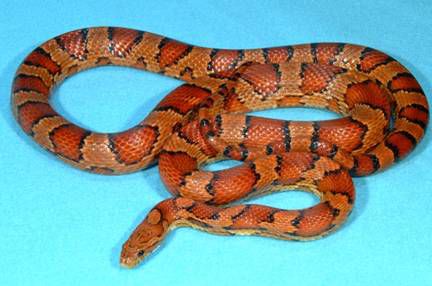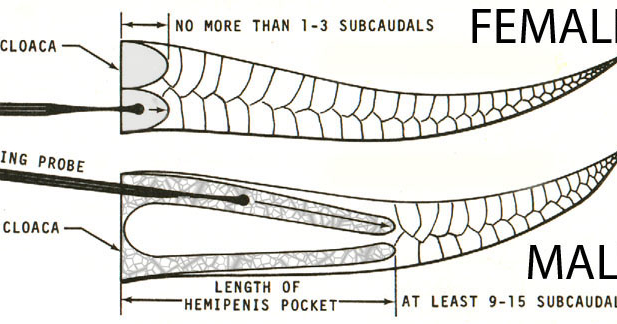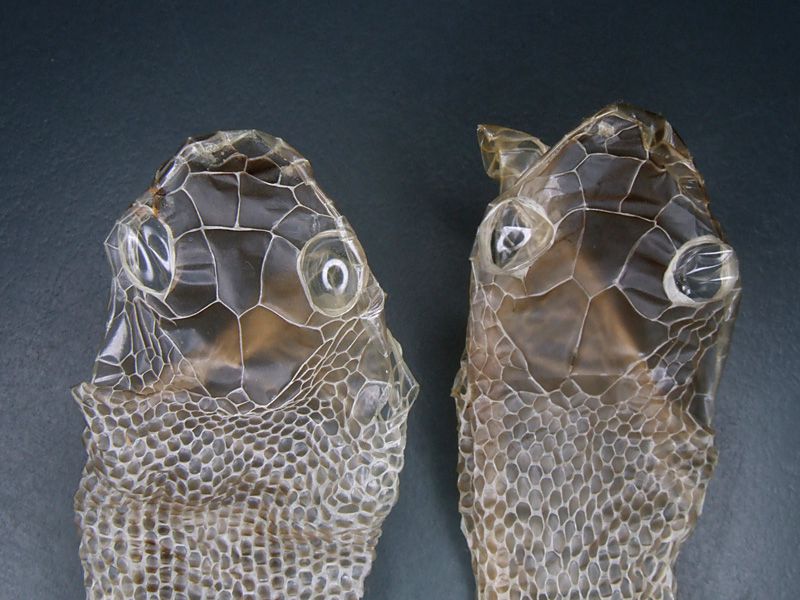Corn snakes (new info)
These snakes are perfect for beginners
Where are they from?
Corn snakes come from America 🇺🇸
They are mainly founded in corn fields, that's how they got their names as farmers will but them in their corn fields to eat any mice and any other pests that will eat their crops
They also live up to 20 years with the right amount of care
They can grow to about 4 feet some are said to grow longer
Also it's sex can determine its length, girls being longer then boys
What colours can I get?
There are many colours you can get them in, but this is there normal and natural colour

The other colours you see are called colour morphs, you won't see this in the wild.
Some morphs are rare and hard to come by.
The way they get these morphs is by breeding over and over until they get the colour they want.
Here are some morphs:


You can get more colours as new morphs are being breed every year
What do they eat and how much?
They eat mice and these are the different sizes and the names behind them

The amount and size of the mouse you feed them depends on the age and size of the snake

As you can see you don't feed them everyday, make sure you have written down the day you have feed them so you know when to feed them again.
After you have feed them you can't handle them for 3 days as they might regurgitate (bring it back up). If this keeps happening the snake can become ill.
Also when the food comes back up it stinks
If your snake doesn't eat don't panic they can go 5 months without food. Sometimes maybe longer.
Here is how you feed them, you don't have to put them in the tub when they are older, only when they are younger or if there is two in the same enclosure. If you have two snakes in one enclosure then you need to put one of them in the tub and wait till both of them have finished eating.
[There should be a GIF or video here. Update the app now to see it.]
Remember you must give them fresh water everyday
What size vivarium can I keep it in?
With the animal rights you can keep it in a shoe box.
With their enclosure they need to be able to stretch out, also if the enclosure is to big they will stop eating
What substrate can I use?
Aspen - a suitable substrate for Snakes
Newspaper - a suitable substrate for Snakes
Beech Chippings - a suitable substrate for Snakes
Orchid Bark Substrate
With Snakes, there are a couple of different substrates that can be used:
Aspen Shavings
Aspen shavings may be used for Snakes. The shavings cannot be cleaned and so have to be removed and replaced with fresh shavings when dirty. If you use aspen shavings the urine and feces can be scooped out with a cat litter scoop, and replaced with fresh aspen as needed. Be sure to remove soiled substrate as soon as possible; urine-soaked material will become a breeding ground for bacteria, which could harm your Snake. If you use this type of substrate you will have to place your snake in a secure area to feed it; you do not want it to ingest any of the shavings.
At least once a month, all shavings should be removed and disposed of, and the entire enclosure cleaned and disinfected before new shavings are placed inside. This is particularly important if your Snake has musked inside the vivarium, as the musk is a diluted form of excrement, which should be removed as soon as possible.
Do not use Cedar or Redwood Shavings these are toxic for all animals and should never be used in predator or prey enclosures. Cedar and redwood should not be used in constructing housing for any animal, nor in any furniture or paneling in a vivarium in which any animals are housed.
Newspaper: Layers of newspaper have been used for years in animal keeping. It is relatively absorbent when several layers are used, and inexpensive to replace. However, the inks used in printing are known to be harmful to animals. Unprinted sheets may be obtained at shops selling moving supplies, or roll ends may be obtained from some newspaper companies. As with printed newspaper, it is relatively absorbent when several sheets are used, especially when layered with paper towels. Unlike printed newspaper, the unprinted sheets and rolls are not impregnated with potentially harmful inks that could harm your King Snake.
Easily obtained and relatively inexpensive, paper towels make an excellent substrate for reptiles with belly injuries and those in the early stages of quarantine.
Beech Chippings: Beech Chippings are readily available from most Reptile shops and are quite an attractive substrate to have in the vivarium. It comes in three different grades - small, medium or large, so you can choose the size which is most suitable for your snake. It allows for spot cleaning, although it is not as absorbent as Aspen. It is not a good substrate for burrowing snakes.
Coco/Orchid Bark: Some reptile shops may recommend the use of Coco or Orchid bark for King Snakes, but this substrate is more appropriate for snakes that require higher humidity levels. It is unadvisable to use this substrate for King Snakes as they are susceptible to respiratory infections (R.Is) if the humidity becomes too high.
Astroturf® / Artificial Grass
Astroturf® was the first artificial grass floor covering. Since then, carpet manufacturers have come out with many grades of artificial grass. Hardware shops usually have two or more grades. The least expensive is generally the best to use. It is more flexible, a key factor for thorough cleaning and disinfecting. Pieces can be washed and disinfected repeatedly before they require replacing. Astroturf® is cheap enough that several pieces can be cut for each enclosure and rotated each cleaning day. The pieces of artificial grass substrate sold in small, prepackaged pieces in many pet shops and mail order pet suppliers are the same as the product sold in builder supply shops.
What heating equipment can I use?
Corn Snakes are cold blooded and get heat from their surroundings. In the wild snakes bask in the sun to keep warm or move to a shady spot if they are too hot, this is called thermo-regulation. The ideal temperature for the warm area of your snake's vivarium is around 27-33°C (81-91°F).
Heat should be provided using either a heat mat with thermostat or a bulb with a dimming stat on the roof of the vivarium surrounded by a bulb guard.
Heat mats should only cover between a third and a half of the floor space to allow your snake to thermo-regulate. This heat mat should be regulated by a thermostat to ensure that it does not overheat. Since a heat mat should provide sufficient heat to keep your snake happy, a basic mat stat, like the Microclimate Ministat 100 or the Habistat Mat Stat, should be appropriate. These thermostats are available from reptile shops and online, are relatively cheap, and will ensure the heat source is regulated at a safe level.
A popular alternative to the heat mat is a normal light bulb on the roof of the vivarium, attached to a dimming stat. It is important to ensure that the heat source is protected from direct contact with you snake by using a guard. All snakes do not feel heat in the same way that we do and do not always realise that something they are touching is burning them. A bulb guard will ensure that your snake will stay a safe distance away from the heat of the bulb so burns will be avoided. The disadvantages of using a bulb as a heat source is that the bulb needs to be turned on constantly to keep the vivarium at the correct temperature.
Your snake does not require light 24 hours a day and can suffer from stress if the light exposure is too long. It is recommended to keep your snake in a natural light pattern that mimics normal daytime, so a heat mat is a better choice between the two heat sources. If you do decide to use a heat mat, then a energy-saving bulb with guard can be added to the vivarium for decorative purposes to help you see your snake.
It's useful when using either method to have a small thermometer on each end of the vivarium to check the temperature. Place the thermometers near the hides on top of the substrate as this is where your snake will spend the majority of it's time. One end should be around 27 to 33°C and the other around room temperature. Checking temperatures regularly is advised to ensure that your Snake can thermo-regulate by moving around the tank
Corn Snakes do not require a U.V lamp in their vivariums but it's best to give it to them that are under a year old
What enrichments do they need?
Give them some wood to climb on as well give them some hiding places like caves, have one cave that's got moss in it so when it needs to get cool your snake can go in there
Do they need to be together or separate?
They can be housed together however it's not really advised, you have to introduce each other first. So mainly kept alone, however when it comes to feeding they need to be separated. Because if they both grab the same food and they won't let go while eating till eventually one snake will start eating another and they both will die.
How do I breed and find out their genders?
The way to tell the gender is to insert a metal pole into their vent. I personally recommend you get a snake specialist to do this. As with one wrong move it will damage it so they won't be able to breed.
Depending on how many scales it goes down shows what gender it is.

Breeding
Corn snakes will generally breed from the age of 18 - 24 months of age if they have been well fed and so are reaching adult size.
Once you have two suitable snakes (any color morphs can breed with each other) you'll need to use environmental manipulation to prepare them for breeding. Like most animals from temperate climates, corn snakes lives are dictated by the seasons
Start introducing the males to the female's encloser. If not interested separate and try again in a day or so. After witnessing copulation at least twice, separate the snakes and feed the female as much as she will accept, dusting with calcium supplement. The males can be put on a normal feeding schedule of 1 food item per week.
Pre-breeding shed
The female should shed within 3 to 4 weeks after a successful breeding. This is the pre-laying shed.
Egg laying
Supply a nesting box, shoebox size container with moistened sphagnum moss with a access hole cut in the lid. She should start laying 8 to 12 days after her shed. It may take her at least 24 hours to finish. Feed her as much as she will accept and reintroduce the male to her if she is to double clutch, if not start regular feeding schedule.
Egg Incubation
Have incubator already set up. Temps. 79-86 degrees F. My preference is 80-82 degrees F. Humidity 75%-90%. Use moistened perilite or vermiculite as a substrate. Gently remove eggs, do not turn, separate or flip eggs around. Place in indention's made by you on the substrate. Put lid with 1 small hole drilled in each corner on and monitor regularly using hygrometer and thermometer.
They also say the cooler the temperature the more chance of females hatching while the higher the temperature the more chance of a male hatching
Hatching
After 60 to 75 days the eggs should have pipped. Don't force snakes out of their eggs, let them emerge on their own. Once totally out of their egg remove and place in cage. Feed after first shed.
Shedding
Snakes shed their skin so they can grow. This will happen more when they are younger about once every two weeks. And less often when they are older.
To tell when they are about to shed their skin their eyes will go cloudy. As there is skin over there eyes as snakes eyes are always closed and their eyelids are thin enough so they can see through them
When they start to shed their skin, they will become aggressive, as they can't see.

This is how their eyes go

And if you see this ^^^^ it's good if not, then it can cause sight problems. So to sort this out put them in the bath so it loosen the skins.
The temperature of the bath needs to stay within the temperature of 25 Celsius and 35 Celsius.
What illnesses or problems can they get?
Mites: Mites are little black parasites that live on your Snake and feed on their blood. If your Snake catches mites they can usually be found around the eyes, mouth and under scales. Your snake will seem lethargic and may go off it's food during a mite infestation. If you discover mites on your snake, immediately bathe it in warm water and fully disinfect the entire tank and contents. Refill your vivarium with white kitchen roll and leave the cage furniture to a minimum. This helps stops the mites being able to breed as they need substrate to lay eggs and also allows you to see them more clearly while you monitor your snake. Repeated bathing and disinfecting of the vivarium helps, but it unlikely that you will remove a mite infestation without some sort of treatment. Reptile shops sell various treatments to help kill off the mites, but some vets may prescribe a weak dose of Frontline if they feel it is necessary.
Respiratory Infections (R.Is): R.Is are a bacterial infection that is usually caused by poor cage conditions, low temperatures or too much humidity, but can be passed from snake to snake too. Snakes may sound wheezy with excessive saliva and nasal discharge. Their mouths may also gape open as they struggles to breathe. Very mild R.Is may go away themselves if the conditions that the snake are living in are corrected, but serious infections need to be seen to by a vet immediately to avoid Mouth Rot or even death of your Snake. The vet may prescribe an anti-biotic called Baytril, which is safe enough to be given to your snake.
Regurgitation: When a snake regurgitates it's meal, it may not necessarily be down to illness, but as regurgitation is a symptom of many digestive problems, illnesses and stress it is recommended that if your Snake does regurgitate it's meal that you monitor your snake very closely for further symptoms. Sometimes a Snake may regurgitate it's meal if it is handled too soon after a feeding or if it has been fed an item that is too large for it. In this case, you should leave the snake to settle back down for a week before trying to feed again. If your Snake repeatedly regurgitates it's meal, loses excessive weight or shows any other signs that are worrying you, seek medical attention as soon as possible.
I hope this helps, any problems or questions don't be afraid to ask
Bạn đang đọc truyện trên: AzTruyen.Top